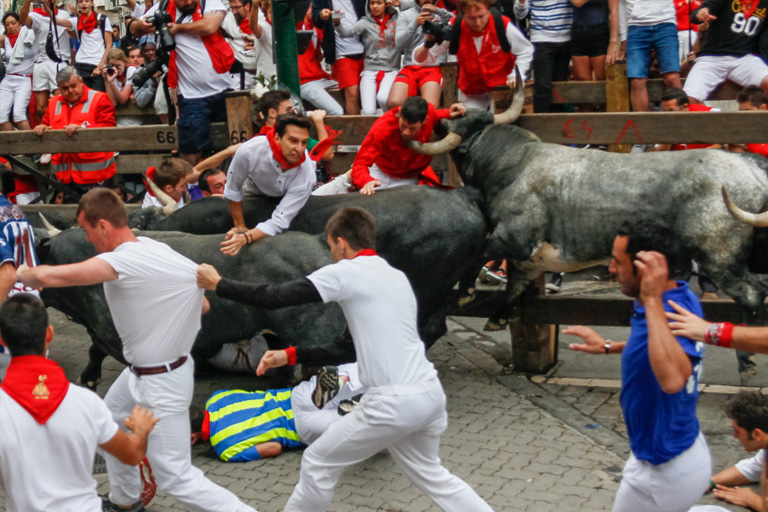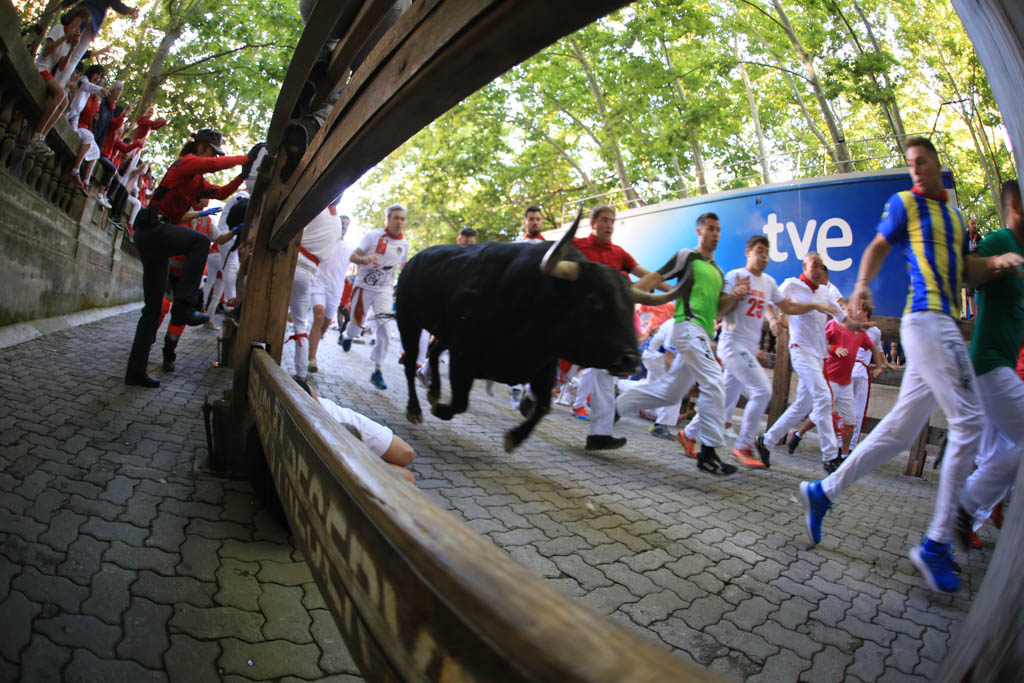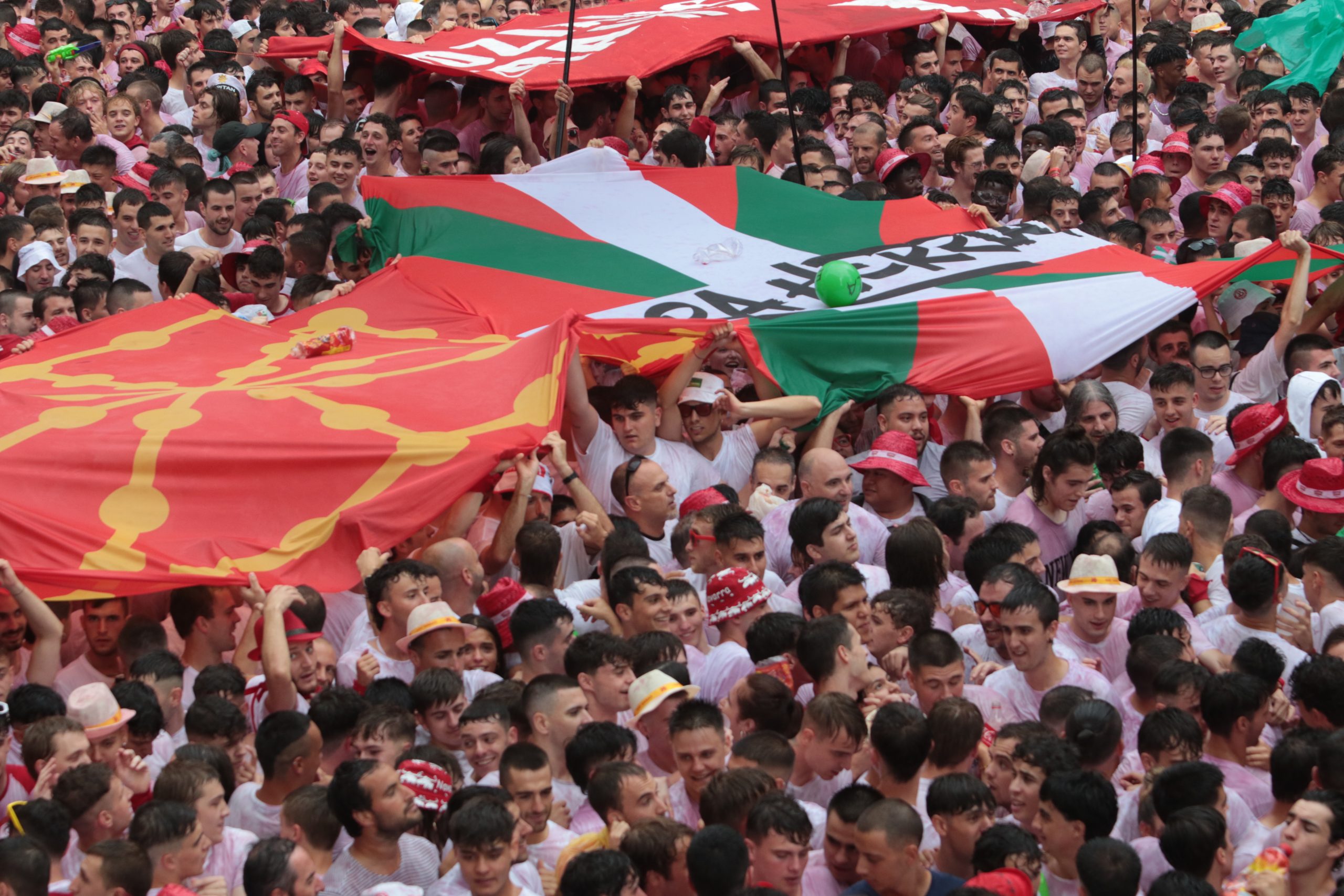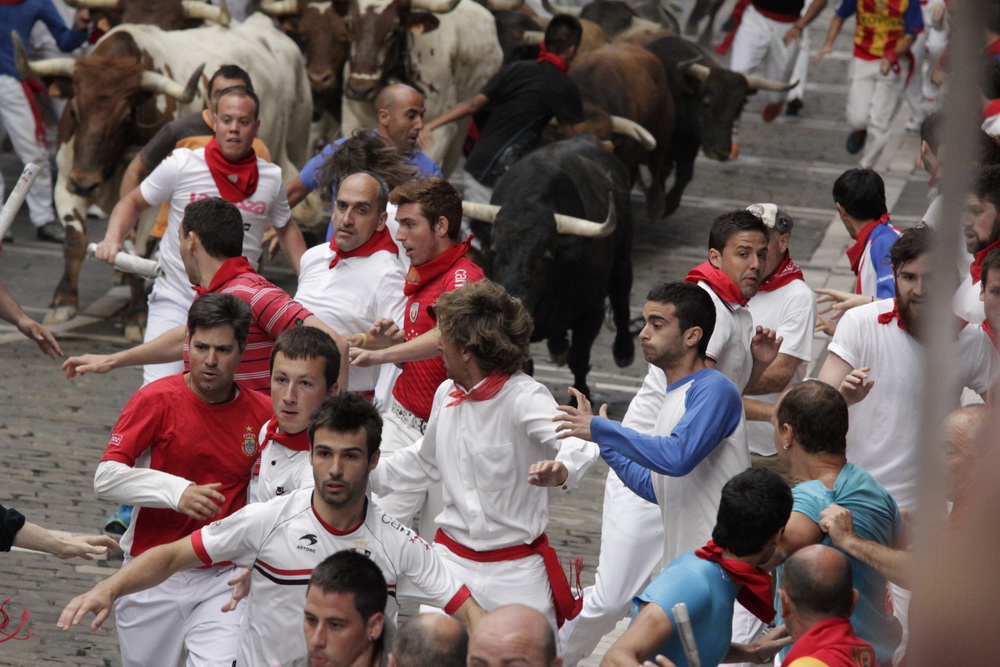An important maxim for the encierro is the speed of the bulls. No one can complete the course of the closure of a single lock. It’s not humanly possible, to which must be added the obstacles and other corridors. In recent years, the ranches prepare their bulls and the running of the bulls is faster because the bulls are faster. In addition, the Estafeta / Mercaderes curve is treated with non-slip and the bulls slip less. The average speed of the herd is around 20 hm/h in a normal race, something impossible to sustain for so long in these conditions. The 800m world record is held by David Rudisha with an average speed of 28.8 km/h, while the Miuras completed their best run at Sanfermin with 25.2 km/h.
In the list that you will contemplate, you will be surprised. You will surely have read that the Benítez Cubero cattle farm on July 7, 1975 completed the Sanfermin running of the bulls in 1 minute and 50 seconds. That would be the fastest confinement, but we did not name it that way because we have not been able to verify it, neither with the images of TVE nor with the radio transmissions. The confinement has been gaining in popularity and currently there are factors that are taken into account that were not before, such as the duration.
All our data is based on the fact that there is live video and radio evidence of these confinements. In 1982 RTVE began broadcasting the running of the bulls live. Later you can read why our calculations use 875 meters as the race length and where we start counting and deducting seconds from the race.
The fastest running of the bulls in history
| 14/07/2015 | Martes | Miura | 2´05? | Seco | Soleado |
| 14/07/2018 | Sábado | Miura | 2´09? | Mojado | Nublado |
| 14/07/2017 | Viernes | Miura | 2´10? | Seco | Nublado |
| 10/07/2018 | Martes | Fuente Ymbro | 2´10? | Seco | Soleado |
| 13/07/2011 | Miércoles | El Pilar | 2´11? | Seco | Nublado |
| 08/07/1998 | Miércole | Conde de la Corte | 2´12? | Seco | Cubierto |
| 13/07/2015 | Lunes | Garcigrande | 2´12? | Seco | Soleado |
| 13/07/2019 | Sábado | La Palmosilla | 2´12? | Seco | Soleado |
| 14/07/2022 | Jueves | Miura | 2´12? | Seco | Soleado |
Duration and exact length of the confinement
In 2019 a person called us in the middle of a party because it depended on the duration of the confinement that a good amount of money was won in a betting house. In the conditions of the contest, it stated that the duration of the confinement published on our website would be taken as a reference. The problem was that the duration of the confinement of TVE and that of sanfermin.com was different. With the duration of TVE that person earned money and with that of sanfermin.com another person earned it.
You will wonder how there can be different durations of the same confinement and that is why we are going to explain it. To begin with, since we regularly calculate the speed of the bulls for statistics, we take into account the exact time and the correct distance. They are regular variables that must be calculated with the same criteria to be able to compare them with each other over time.
1-.Our measurement of the confinement in meters goes from the door of the corral of Santo Domingo, to the door of the bullpens of the square. We do not take into account the interior space of either pen. That distance measured by the center of the street of the entire route and the center of the square, up to the door of the corrals, is 875 meters. The measurements were made with a calibrated wheel odometer after the reform of Estafeta street and it was revised with the reform works of the alley.
There are two segments where the bulls run alone, as is the beginning of Santo Domingo and, if there are no paws or reckless people, from the center of the bullring to the entrance to the bullpens. We consider everything lockdown. If a shepherd has an incident in the square, he is injured from the confinement; if a runner can’t open in time to reach the square and keeps running, he’s on the run. That is the average that we take into account for speed averages, etc.
2-.And once we have the distance, let’s calculate the time to establish averages and speeds. We do not take the sound of the starting rocket as a reference. We generally correct one to two seconds, until the first bull horn or halter appears through the door of the corrals in Santo Domingo. In the same way, we do not take into account the sound of the rocket that warns that the bulls are in the ring. The running of the bulls does not end for sanfermin.com until the last member of the starting herd (either bull or halter) has entered the corrals. If a bull has to be picked up by the tail halters, that bull will mark the end of the confinement. If a meek from the initial game is delayed, that halter marks the end of the race.
It is for these reasons that the times of the running of the bulls on sanfermin.com generally differ from the times on TVE. If we did not do so, we would not be able to calculate the speed averages of the herds as faithfully as possible.
An example of how it affects the average speed of the running of the bulls
In the running of the bulls in Puerto de San Lorenzo on July 7, 2019, it can be seen that the herd takes four seconds to leave after the clock starts. In addition, at the end of the race, we consider that another second is given away. The official transmission time is 2.41. For sanfermin.com, it is 2.36, which is the real time in which the bulls were running. With these data, the confinement was completed in 2 minutes and 36 seconds. Which is 156 seconds.
The speed formula is distance divided by time, which in this case would be V=875 meters/156 seconds. This gives us 5,608 meters per second, which in kilometers per hour is 20.18. If we take the official TVE time as a reference, with five seconds without a race, it is 161 seconds, giving 5,434 meters per second and 19.56 kilometers per hour. We understand that this time is not real because it has five seconds in which the bulls were not on the course, offering incorrect figures to compare with other running of the bulls. We hope that is clear.






